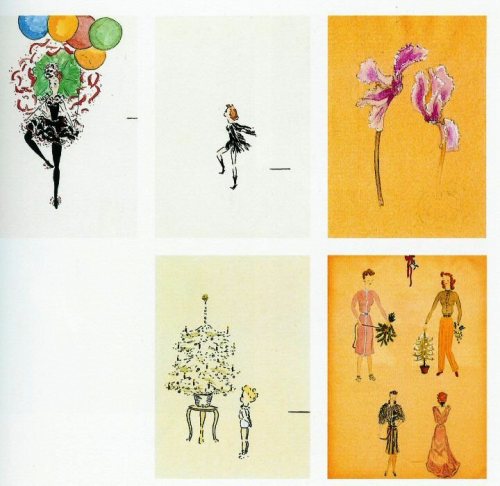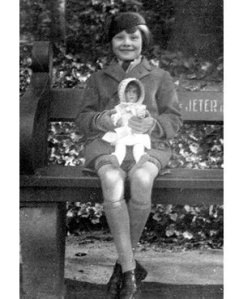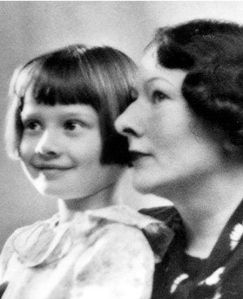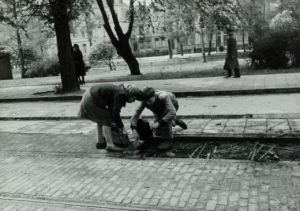It was May 9, 1940, and Audrey Kathleen Hepburn (Ruston) had just turned eleven years old. She was living in Holland with her mother, her two older brothers, and other relatives. Her father lived in London. Her parents were divorced.
To celebrate Audrey’s birthday, her mother, Dutch Baroness Ella van Heemstra Ruston, had bought tickets for her and Audrey to see a performance by the great English dance troupe, The Sadler’s Wells Ballet. The company was touring Holland, France, and Belgium. Audrey’s town of Arnhem was to be one of their stops.
Audrey (1929-1993) had been living in Holland for only nine months. Previously, she had been in boarding school in England. But, in September 1939, Hitler invaded Poland. All at once, England was no longer a safe place for a little girl, as it had declared war on Germany. At her mother’s request, Audrey’s father scooped up Audrey from her school and put her on a big orange plane to Holland (also known as the Netherlands), where her mother’s family lived. Holland intended to stay neutral in the war with Germany and was considered a safe place for riding out the conflict.
Audrey had not seen her dad since that day at the airport. She missed him so! Her parents’ divorce had left an aching hole in her heart. But on this particular May day, Audrey was not sad. She was looking forward to the ballet! Her mother had given her more than one reason to smile:
“My mother had our little dressmaker make me a long taffeta dress. It went all the way to the ground, and it rustled. There was a little round collar, a little bow here, and a little button in front. The reason she got me this, at great expense, was that I was to present a bouquet of flowers at the end of the performance to…the director of the company.”
The evening finally arrived. Audrey wore her beautiful new long dress and got to see the famous Margot Fonteyn dance in “Horoscope” and “Façade” by choreographer Frederick Ashton. It was marvelous.

Margot Fonteyn as the Polka from Ashton’s Facade, 1940. Fonteyn was the principal dancer of the Royal Ballet Company (originally the Sadler’s Wells) for 20 years.
Afterwards, Audrey’s mother took the stage and gave a formal thanks to the troupe first in Dutch, then in English. Next was Audrey’s big moment. To her surprise, her bouquet of tulips and roses was hurriedly accepted. A quick supper followed, as the dancers hustled about afterward, gathering up their props and costumes, to get on their bus to leave Arnhem that very evening. According to the British consul, there was suspicious German military activity nearby. The dancers didn’t want to get stuck in Holland if the Germans did attack and closed off the borders.
As Audrey’s head lay on the pillow that night, the Germans invaded Holland, Belgium, and Luxembourg. The Dutch were totally shocked. They never dreamed Hitler would attack them, his “Dutch cousins”! Just the night before, matter of fact, Hitler had made a radio broadcast, promising to all who listened that he had no plans whatsoever of attacking Holland. For five days, the Germans came down on the Dutch with the force of Hell. They never bothered issuing a formal declaration of war either.

This is the city center of Rotterdam, Holland, following the German Blitz of May 14, 1940. A ceasefire was already in progress but the Nazis bombed anyway.
They blasted the city of Rotterdam with an air attack that killed 1,000 Dutch civilians and left 85,000 homeless (accounts vary as to the exact number).
Incendiary bombs were dropped on the Hague. Nazi troops tore through Audrey’s town of Arnhem, looting and despoiling as they pleased. The Germans threatened to bomb every Dutch city until they were demolished until Holland surrendered. The Dutch military, though terribly outnumbered, fought back anyway, but they were no match for the conquering horde, and were forced to surrender. After five days, Holland capitulated. It would be occupied by the Nazis for five very long years. The Germans wanted to take over the world and destroy the Jewish population.
At first, Audrey’s family was allowed to remain at their regal ancestral home, Castle Zypendaal (or Zijpendaal). Audrey Hepburn’s mother’s family was of Dutch nobility.

Audrey Hepburn’s mother’s family was of Dutch nobility. This is one of their homes, the Castle Zypendaal in Arnhem.
Over the next ten months, the van Heemstra bank accounts, securities, and jewelry would be confiscated by the Nazis. Rations were imposed on food and fuel which were soon in short supply for the suffering Dutch people. Food became completely nonexistent during the Hunger Winter of 1944 as the Germans cut off all imports of foods to punish the Dutch Resistance (secret group that fought back against the Nazis from inside Holland). During that time, Audrey confessed to eating bread made from flour from tulip bulbs and grass to keep from starving to death like 20,000 other Dutch citizens did that winter.
The German occupiers spread anti-English sentiment, banning the import of British jams and biscuits and outlawing the Girl and Boy Scouts. The Germans hoped they could whip the Dutch into a hatred for the English and recruit them in the battle against Britain.
Audrey Hepburn-Ruston was an English name and Audrey spoke English. She carried a British passport. With the Nazis cracking down on the English, the Baroness was worried. Quickly, Audrey’s mother gave Audrey a new identity as a little Dutch girl. For the war years, the Baroness changed her daughter’s name to Edda van Heemstra. Audrey – now Edda – took Dutch language lessons so she could pass as Dutch and not be arrested for being English. Audrey did not risk speaking English for the rest of the war.
Audrey was keen to be a famous ballet dancer and her mother was the quintessential stage mom. In 1941, Ella sent Audrey to the Arnhem Conservatory to study dance. It was then that Audrey decided that she wanted to grow up to become a ballerina. Her dream was to
“wear a tutu and dance at Covent Garden.”
Her mother made her ballet slippers from scraps of felt, as materials became scarcer and scarcer, since the Nazis took the best for themselves, always.
As a child of war, Audrey learned to cope with hunger, fear, and deprivation through art, music, and dance. Soon, though, she and some other dancers began staging private, secret dance shows to raise money for the Dutch Resistance.
“I designed the dances myself. I had a friend that played the piano, and my mother made the costumes. They were very amateurish attempt – but…it amused people.”
The recitals were given in houses with windows and doors closed, and no one outside knew what was going on. Afterward, money was collected and turned over to the Dutch Resistance. To keep from being discovered, the audiences did not clap.
“The best audience I ever had made not a single sound at the end of my performance.”
Sometimes at these “black performances,” resistance workers attended. They gave the young performers money and folded messages to be stuffed into the children’s shoes and transported the next day to resistance workers. The children risked death to save the lives of resistance workers and Audrey was one of these children.
One winter day, Audrey was walking along a city street when three truckloads full of German soldiers toting rifles stopped suddenly. The soldiers ordered all the girls in their sight to line up and get in the trucks. Audrey did as she was told. As the trucks drove off, Audrey kept saying the Lord’s Prayer to herself in Dutch. Then the convoy stopped unexpectedly. Some soldiers jumped out and began abusing some Jews. Audrey said:
“I remember hearing the dull sound of a rifle butt hitting a man’s face. And I jumped down, dropped to my knees, and rolled under the truck. I then skittered out, hoping the driver would not notice me – and he didn’t.”
And where was Audrey’s father all this time? He was arrested in England and accused of peddling Nazi propaganda for the notorious leader of the British Union of Fascists, Sir Oswald Mosley. He remained under house arrest for the duration of the war on the Isle of Man with other suspected Nazi sympathizers.
Below are some beautiful drawings Audrey made during the war.

Audrey Hepburn’s childhood artwork
























